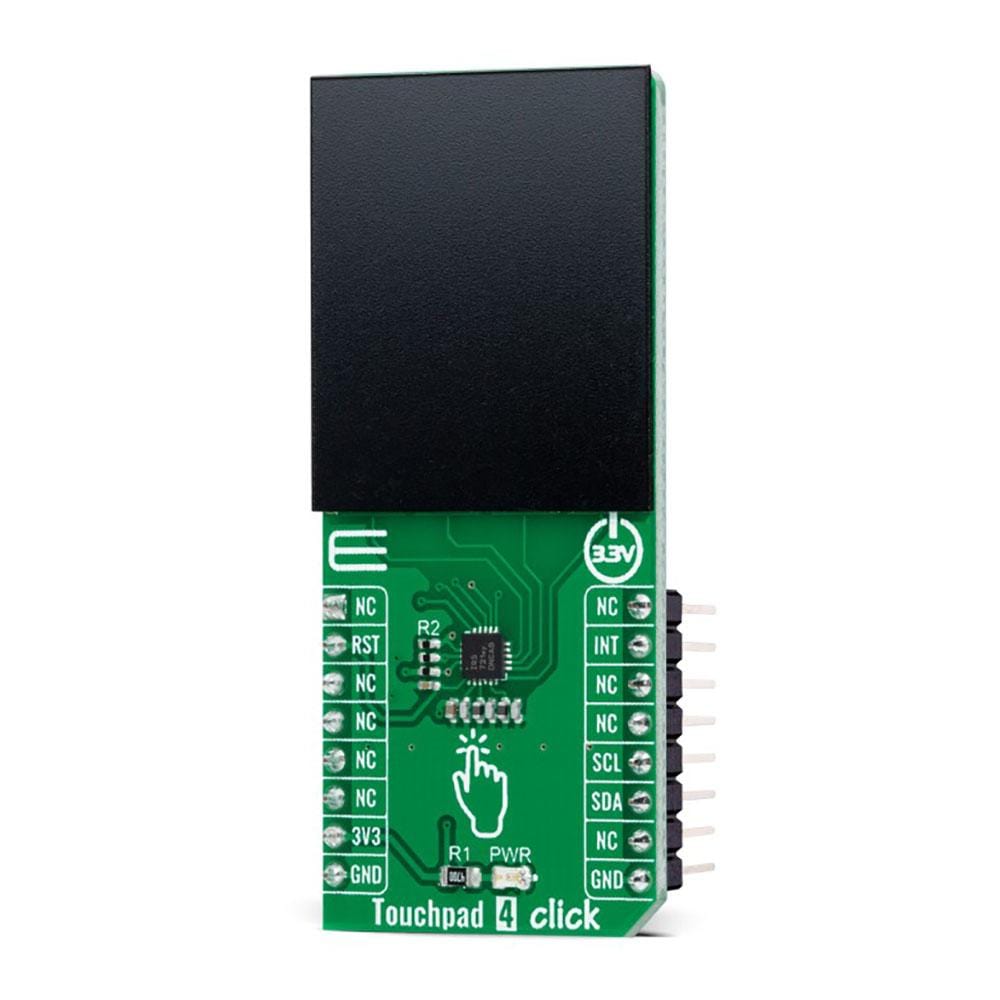
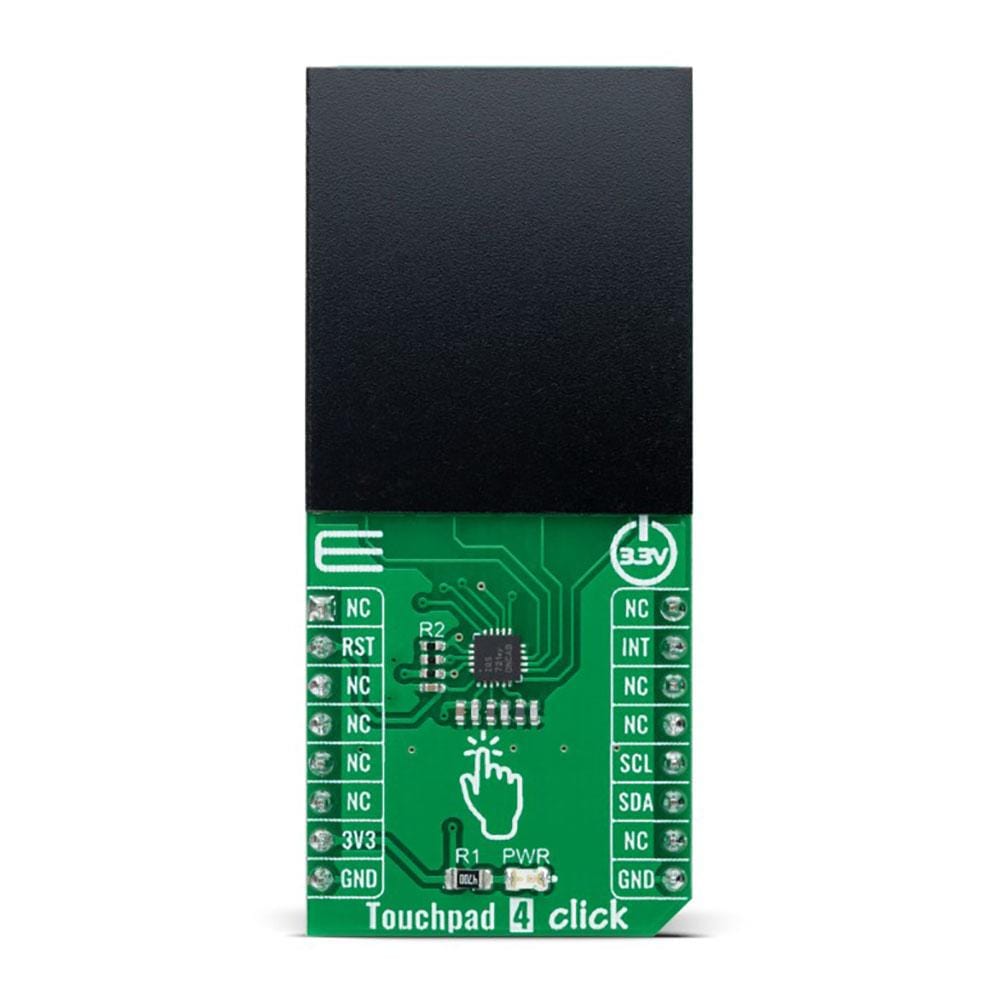
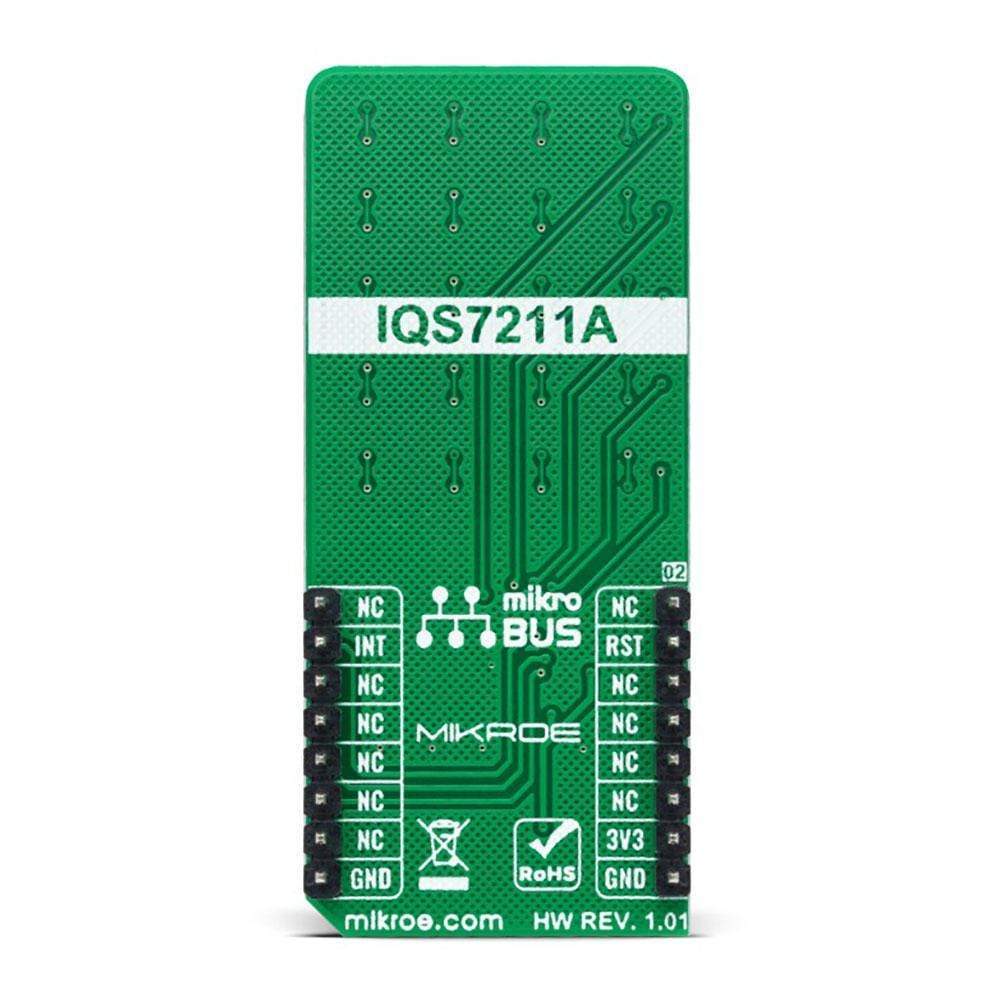
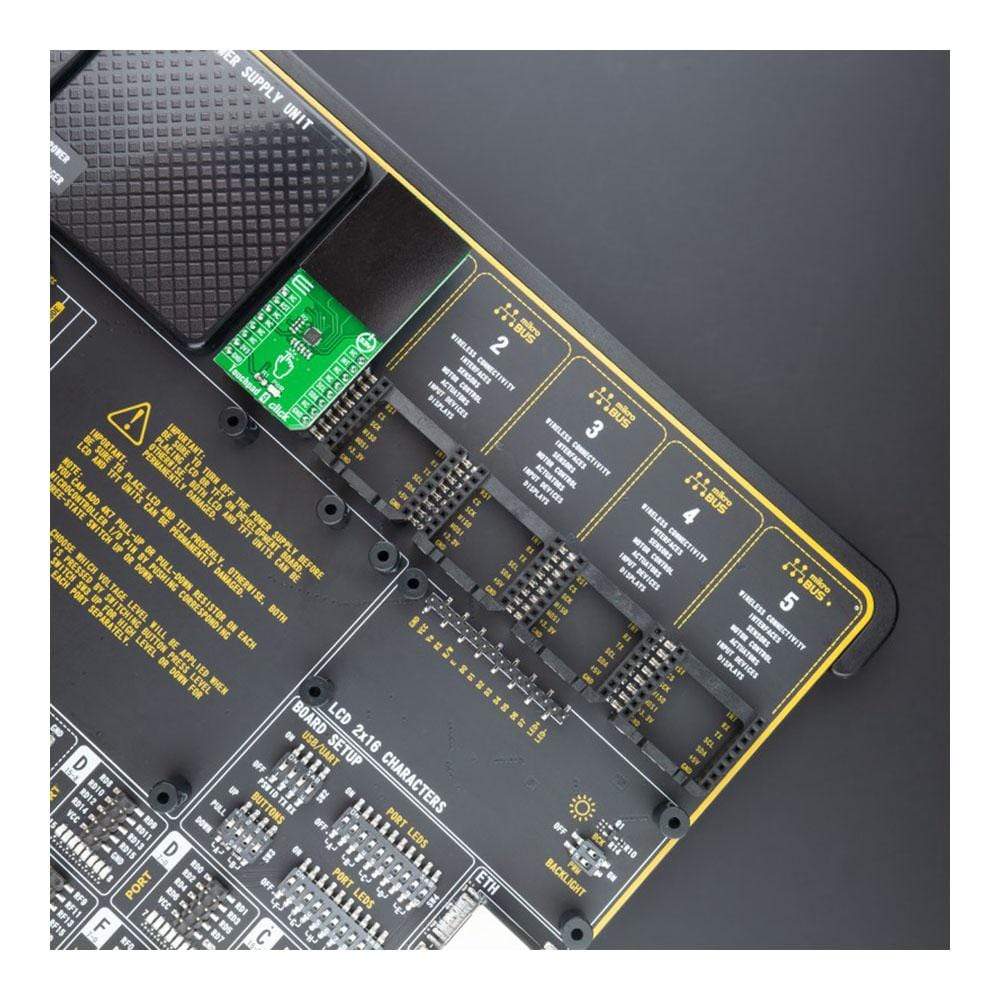
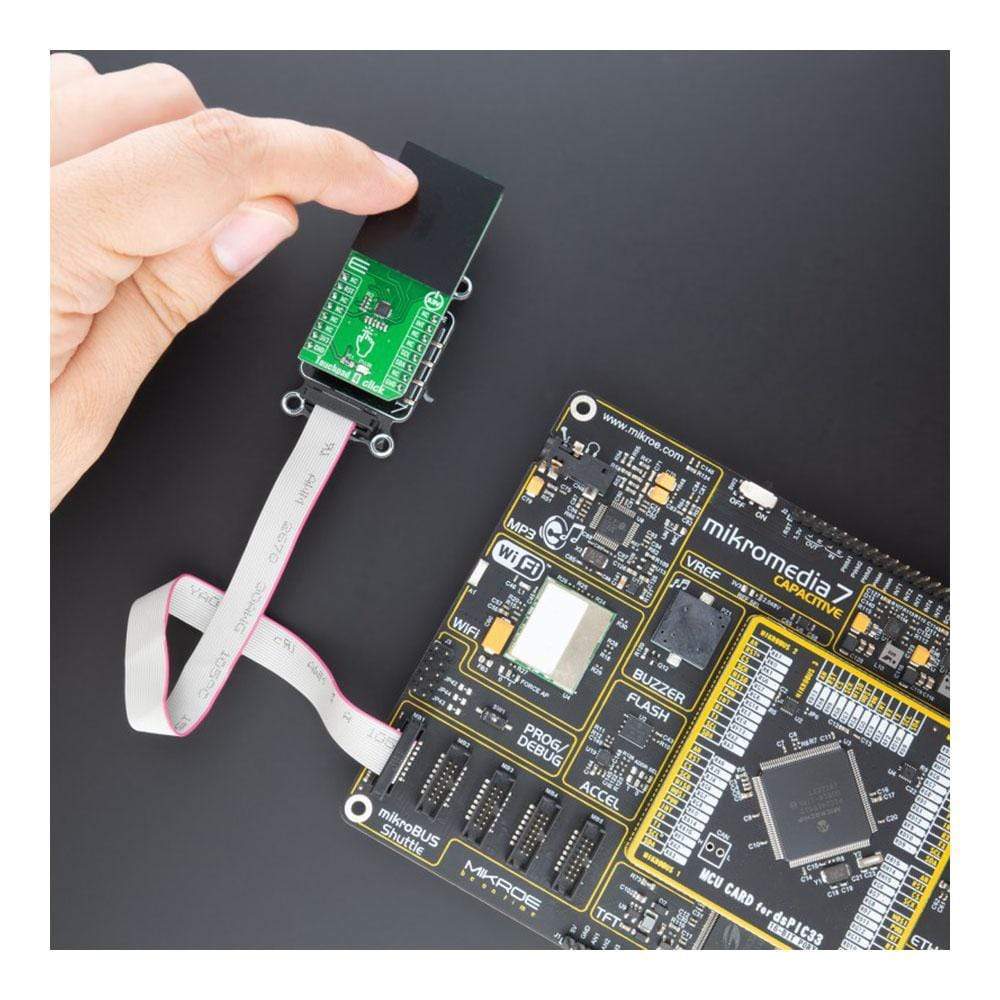
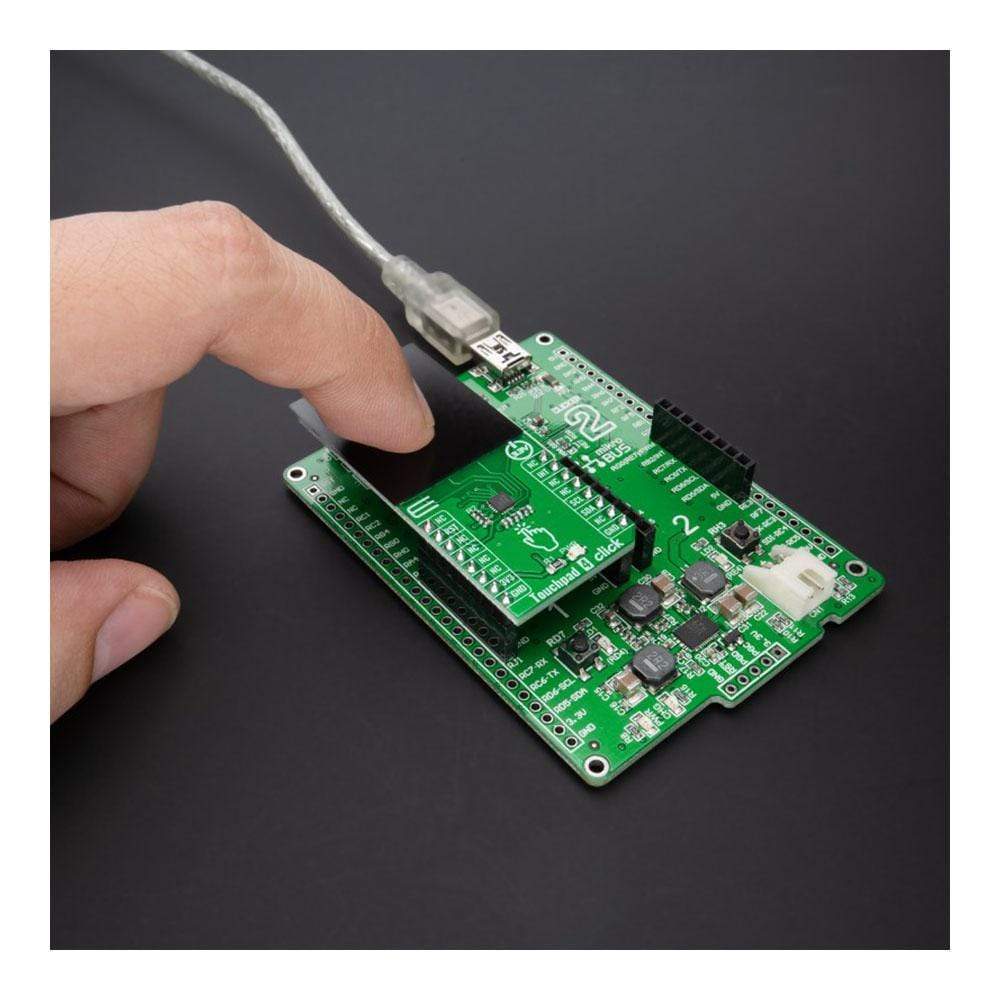
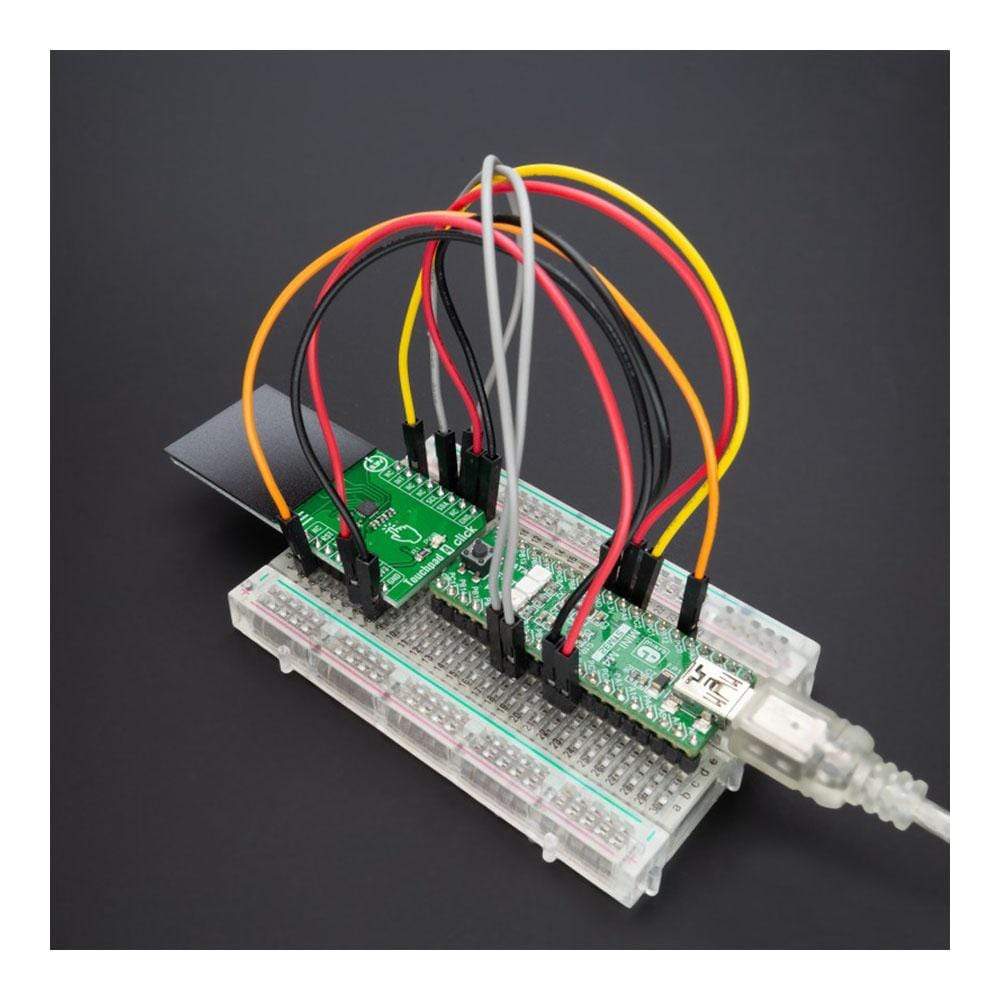
Overview
The TouchPad 4 Click Board™ is a compact add-on board that easily integrates projected capacitive touch into your projects. This board features the IQS7211A, a tiny capacitive touch controller from Azoteq. A low-power dedicated wake-up touch controller launches a complete touchscreen sensing solution with a 25.4 x 29mm trackpad dimension, best-in-class sensitivity, and power consumption. It is characterised by embedded gesture engine recognition for simple gestures (tap, swipes, hold) and built-in noise detection and filtering.
The TouchPad 4 Click Board™ is suitable for human-machine interfaces, keypad or scrolling functions, single-finger gesture-based interfaces, and more.
Downloads
Le TouchPad 4 Click Board™ est une carte complémentaire compacte qui intègre facilement la technologie tactile capacitive projetée dans vos projets. Cette carte est équipée de l'IQS7211A, un minuscule contrôleur tactile capacitif d'Azoteq. Un contrôleur tactile de réveil dédié à faible consommation lance une solution de détection d'écran tactile complète avec une dimension de pavé tactile de 25,4 x 29 mm, une sensibilité et une consommation d'énergie de premier ordre. Il se caractérise par une reconnaissance intégrée du moteur de gestes pour les gestes simples (tapoter, balayer, maintenir) et une détection et un filtrage du bruit intégrés.
Le TouchPad 4 Click Board™ convient aux interfaces homme-machine, aux fonctions de clavier ou de défilement, aux interfaces basées sur les gestes d'un seul doigt, etc.
| General Information | |
|---|---|
Part Number (SKU) |
MIKROE-4752
|
Manufacturer |
|
| Physical and Mechanical | |
Weight |
0.02 kg
|
| Other | |
Country of Origin |
|
HS Code Customs Tariff code
|
|
EAN |
8606027383274
|
Warranty |
|
Frequently Asked Questions
Have a Question?
Be the first to ask a question about this.







